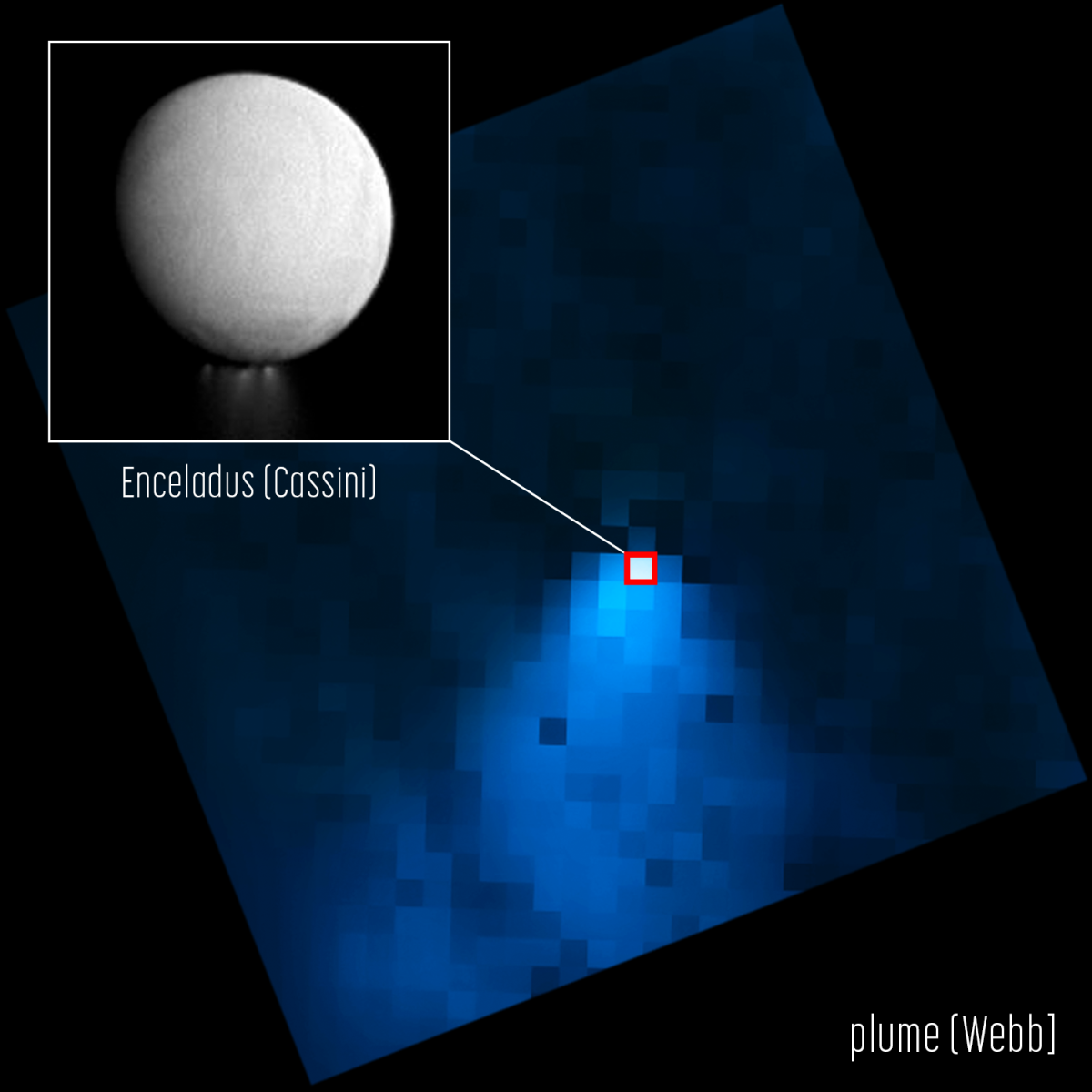An enormous vapor plume more than twice the width of the United States has been spotted streaming out of one of Saturn's moons.
NASA said the 6,000-mile jet was the first water emission of this size to be detected and offered a direct look at how the moon, Enceladus, provides water to Saturn and its rings.

It was detected using NASA's James Webb space telescope and is being studied by a team led by Geronimo Villanueva, a planetary scientist at NASA's Goddard Space Flight Center in Maryland.
"When I was looking at the data, at first, I was thinking I had to be wrong," said Villanueva in a statement. "It was just so shocking to detect a water plume more than 20 times the size of [Enceladus]. The water plume extends far beyond its release region at the southern pole."
Enceladus is an icy ocean moon, one of the 100-plus moons that circle Saturn. It is about as wide as Arizona and has the whitest, most reflective surface in our solar system because of its icy surface.
It is also one of the solar system's most promising candidates for extraterrestrial life thanks to the presence of nitrogen and oxygen-bearing carbon compounds in its oceans—the essential building blocks of life here on Earth.
The moon's icy spray spreads into space around its orbit, according to NASA. This creates a ring of its own, known as Saturn's E ring.
"The orbit of Enceladus around Saturn is relatively quick, just 33 hours," Villanueva said. "As it whips around Saturn, the moon and its jets are basically spitting off water, leaving a halo, almost like a donut, in its wake."
The plumes are not only enormous, but also incredibly fast. NASA said the water vapor was gushing out from the moon at a rate of about 79 gallons per second—fast enough to fill an Olympic-sized swimming pool in a couple of hours. Filling a pool this size with a garden hose would take more than two weeks.
"In the Webb observations, not only was the plume huge, but there was just water absolutely everywhere," Villanueva said.
Enceladus' plumes were first detected by the Cassini spacecraft nearly 20 years ago, although its less advanced software greatly underestimated the size of the propulsions. However, their speed—which is easier to measure—has remained roughly the same. This suggests the icy moon's activity has been fairly consistent over the past two decades.
Jonathan Lunine, a planetary scientist at Cornell University, said this steady activity could be yet another sign of the moon's suitability to host alien life. It "only enhances my excitement about going to Enceladus to search for biosignatures," he told the journal Science on Tuesday.
The Villanueva team's study of the Webb observations has been accepted for publication by the journal Nature Astronomy. A pre-print version is available at NASA's website.
Uncommon Knowledge
Newsweek is committed to challenging conventional wisdom and finding connections in the search for common ground.
Newsweek is committed to challenging conventional wisdom and finding connections in the search for common ground.
About the writer
Pandora Dewan is a Senior Science Reporter at Newsweek based in London, UK. Her focus is reporting on science, health ... Read more
To read how Newsweek uses AI as a newsroom tool, Click here.





